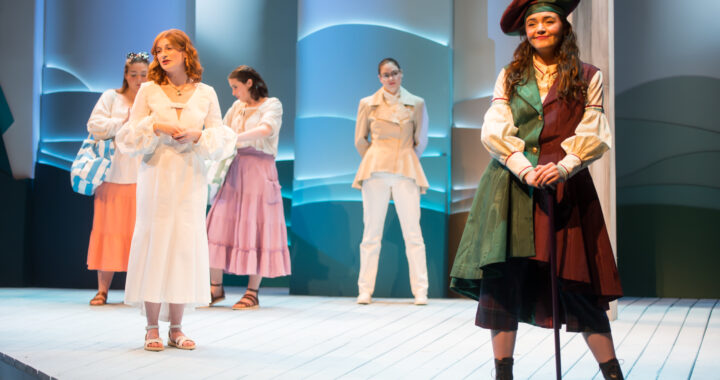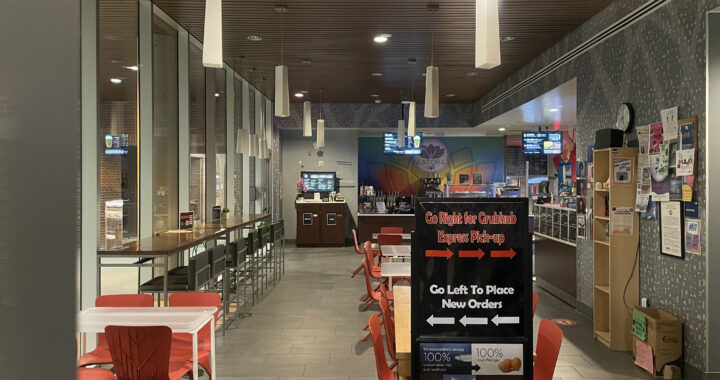‘Mapping Nowhere’ in duPont Gallery
3 min readBy LEIGH WILLIAMS
On Thursday, Sept. 6, the duPont Gallery proudly opened its doors to the newest exhibition by the University of Mary Washington’s own Rosemary Jesionowski, an assistant professor in multiple imaging.
Called “Mapping Nowhere,” the exhibit explores how individuals identify themselves through location.
Armed with a key, Jesionowski opened the gallery’s doors on a Thursday afternoon and flicked the light switch, illuminating images that almost looked like photographs lining the walls.
While she sat on a bench in the gallery, Jesionowski explained the evolution of the concept driving her investigation.
Surprisingly, it is one that is familiar to many. Her childhood, comprised of many moves from house to house, marked the origination of the idea.
She cites a move from Colorado to Ohio that planted the feeling of displacement, and a search for a connection. This feeling would persist as she entered college, and after, when she sought a home of her own. Her art is a reflection of her journey.
“My images simultaneously reference my experience of place and my investigation of the relationship between people and place,” Jesionowski’s website explained.
For Jesionowski, Richmond, Va. became the place she could end her search for harmony between identity and place. Therefore, it’s not surprising that she proudly calls it home.
You wouldn’t know it by observation, but this exhibition has been a long time coming.
The idea originated in an undergraduate sculpture class when she grew bored with an assignment to build a wooden box. In order to personalize her project, she built a secret panel inside and ornamented the addition to look like a typographic map.
Later on, a painting class advanced the development of the papier-mâché technique through a series of unsuccessful projects. Her exhibit is a testament to the mastery that perceived failure can bring.
This collection allowed her to fully explore the technique involved in the papier-mâché box she came back to again and again in her career.
Jesionowski estimates that each piece took approximately 10 to 15 hours to produce, with the exception of a large-scale piece called “Kenya,” which had to be produced within the gallery, since her studio walls could not accommodate its size.
When asked about the process involved, she very coyly described it in vague terms. She did say, however, that the secret method involves a papier-mâché-like process with painting on top.
Many spectators are often reluctant to view art for fear of misunderstanding its purpose, but Jesionowski’s motivation for the exhibit should temper their fears.
“One of my goals is to attract a wide variety of audience members,” Jesionowski said.
From the passive aesthetic admirer to the inquisitive observer, all are welcome to partake in her work.
Perhaps the most interesting aspect of this investigation into location identity is its relevance within a college setting. Displaced from childhood homes, UMW students should find it easy to connect with the search to forge a new identity.
Jesionowski offered encouragement to new UMW students.
“Don’t be quick to judge places as inadequate for yourself,” she said. While it can take time, she says that, with patience, it’ll work out all right.
Looking around the walls of the duPont gallery without the distraction of others, it became beautifully clear that even times of displacement are a necessary investment toward a forthcoming connection.
It may have taken a long time before she achieved a sense of identification, but as the gallery walls illustrate, the journey was not in vain.












